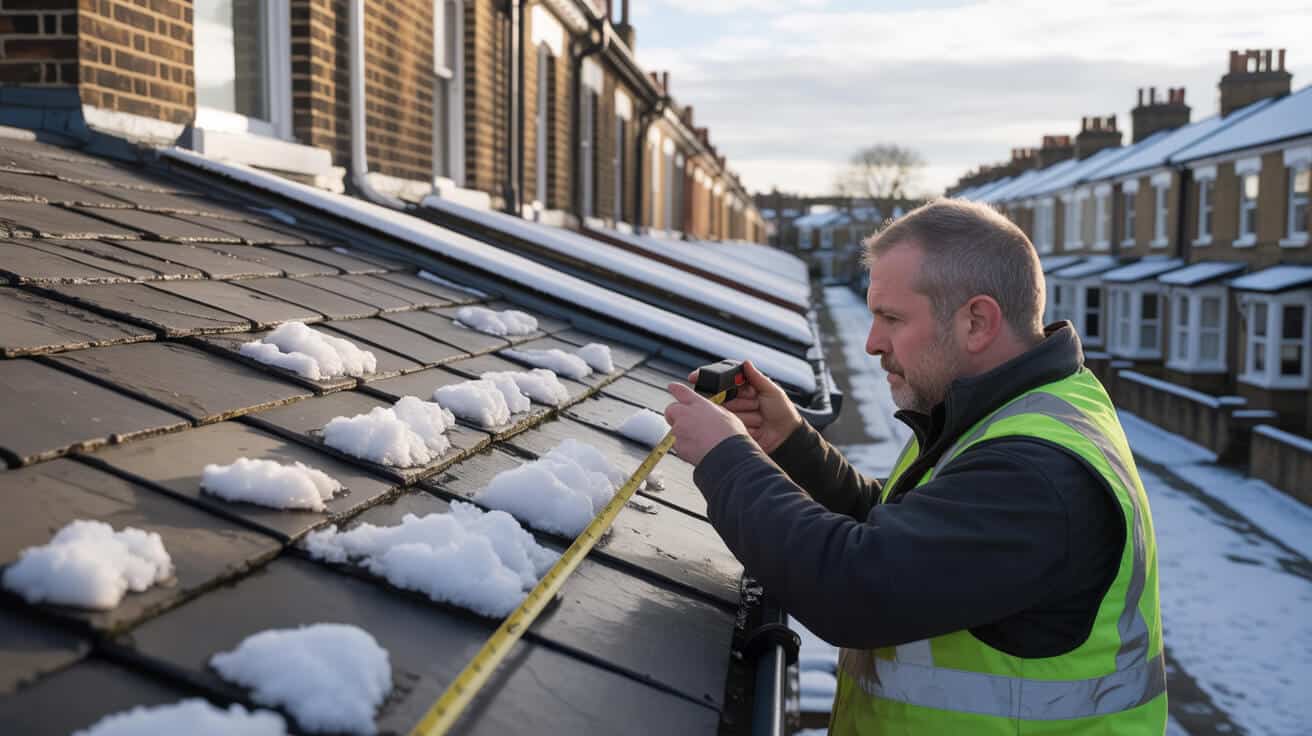 The Ultimate Autumn Maintenance Checklist For London Properties (2025 Edition)
The Ultimate Autumn Maintenance Checklist For London Properties (2025 Edition)

Are Your London Properties Actually Ready for Autumn’s Relentless 2025 Shifts, or Are You About to Be Outpaced?
London’s autumn isn’t offering you a gentle adjustment period—2025 is another year where every “standard” routine comes loaded with new regulatory risks, unpredictable downpours, and a more watchful tenant base. “Quick once-over” isn’t a defence when inspection season comes or repairs snowball into reputation-killing costs. What changed? This year, insurance thresholds are rising, damp cases climb with late storms, and agent shortlists ruthlessly cut landlords who miss the maintenance brief.
Property upkeep isn’t just about fixing—it’s about defending your margins, trust, and speed to let.
All Services 4U combines hands-on trade know-how and the latest compliance bulletins to deliver an autumn checklist tuned for London’s true conditions. Here’s the point: if you’re waiting for “obvious” maintenance triggers, you’re inviting emergencies, deposit disputes, and lost lets. This guide skips the jargon, skips the theory, and delivers the live steps that will keep your residential, commercial, or mixed assets ahead—before autumn gets expensive on your terms, or someone else’s.
What’s the Pragmatic Way to Stop Damp, Mould, and Compliance Nightmares Before Winter—Without Wasting Time?

Damp doesn’t start with soaked floors—it starts invisible, leaks value without warning, and attracts legal attention faster than a trivial repair bill. “Musty” isn’t a vague complaint anymore: it’s a trigger for agent-flagged disputes, new deposit schemes, and rising claims denials. The data? Autumn 2025 rainfall in London is tracking nearly 20% above the old average (Met Office 2025), increasing insurance scrutiny and forcing landlords into tougher repairs.
Ignore a damp trace now and you’ll pay three times for it—first in lost trust, then in rapid cost, finally in compliance penalties.
Walk every unit with a reliable damp metre—eye-tests and hopeful guesses don’t pass agent checks or insurer audits. Focus on ground floors, cold external walls, window corners, and any spot with a recent condensation history. Any reading over 60% is tomorrow’s problem—and it’s a digital problem: time-stamp findings with photos. Visuals and logs are required proof for disputes, claims, and even basic agent sign-off.
- Move large furniture and scan behind—hidden stains or condensation are the real deal-breakers.
- Wipe storm-prone corners with kitchen roll to reveal early-stage condensation.
- Use a certified treatment on minor black mould and ventilate, but always document with dated images.
- For deep or recurring problems, get a professional, independent inspection. This evidence can fast-track claims and settle disputes in your favour.
- Keep a logbook of all findings and repairs. Lost paperwork often means lost claims.
Cutting corners isn’t protection. Every skipped check increases cost, saps property value, and gives competing portfolios the win. Secure your unit, log everything, and make damp prevention your lowest-effort, highest-yield move this year.
How Can You Guarantee Gutters and Drains Won’t Blow Your Insurance—or Your Rental Yields—This Autumn?

Gutters are the most ignored, highest-stakes asset in your property playbook. In London, blocked hoppers or drains don’t just cause weekend headaches—they’re the red flag that can outright void insurance claims or wipe chunks from a winter’s rental income. 2025’s urban trees and council leaf loads only make the problem worse, not easier.
The leak that undoes your winter was probably preventable for the cost of a single visit.
Every autumn, flush every gutter and downspout with a hose. “Quick look” doesn’t work—inspect, flow test, and photo every run. All evidence should be logged with date and before/after images. Flat roofs and shared stack gutters must get extra care: blocked gullies prompt neighbour complaints, travel between units, and escalate into expensive insurance rows.
- Hand-clean all accessible debris first; only then use water to ensure everything flows free and true.
- Watch ground-level gullies after rain—pooling signals upper drain issues.
- After major storms, enforce a rapid check and upload logs. Letting agents and loss adjusters now require this as baseline procedural proof.
- On multi-storey or leasehold buildings: only licenced access specialists should handle gutters—a growing number of boroughs now issue fines for DIY multi-floor work.
Leaving gutter maintenance for “when there’s time” is not just risky; it’s visible on your insurance rejections and on your P&L. Build it into your autumn routine, or build the cost into your emergency reserves.
Where Do the Most Ruthless Autumn Repairs Originate? Beyond the Obvious, Which Areas Silently Decide Your Winter?

The worst autumn surprises are always silent until they write themselves in cold, draughts, or water stains you can barely afford—historically or financially. London’s mix of period, post-war, and “improved” buildings hides pain points agents, surveyors, and loss adjusters zero in on first: rooflines, external shells, and window seals.
One loose tile, cracked render, or missed flashing can become the chasm between a minor service and a full-blown repairs account.
Start by inspecting high points—binoculars or drone where safe, but don’t rely on street view. Check all exposed ridge tiles, chimneys, valleys, and especially side walls that face prevailing winds. Mark every cracked mastic, caulking, or render line—these let water and cold sneak into the structure. Windows with draughts, or even the feeling of cold skirting, signal failing seals or insulation gaps.
- Log and rapidly repair every broken, missing, or loose tile. “It will hold” isn’t a plan.
- Photograph all cracks and flag for repair before freeze-thaw cycles expand damage.
- Run a hand along window frames and door seals—replace any suspect caulking.
- Check and clear all vent grilles and airbricks; blocked ventilation leads straight to internal damp and energy losses.
Digitally record every intervention—insurers, agents, and even some tenants demand digital evidence, not anecdotal memory. Small pre-emptive repairs save a winter’s worth of costs, stress, and lost lets.
Are You Treating Heating and Boiler Checks as a Compliance Chore—or Your Biggest Opportunity for Security and Savings?

boilers have become London’s seasonal gatekeepers for compliance, insurance, and tenant security—more so in 2025 than ever. The old “wait for the cold” approach is a trap: shortages, delayed engineer calls, and peak season breakdowns double your expense and halve your leverage when you need a quick fix.
Cold tenants become vocal in hours—not days. Insurance won’t care that everyone’s busy if your certificate lapses.
Book your Gas Safe–registered engineer as soon as September hits. Run a test on every thermostat; consider an upgrade to smart controls, both for compliance and tenant retention (borough grants are now covering up to half the cost). Bleed all radiators, listen for system noise, and tackle any “cold patch” immediately—these are first signs of bigger issues coming.
- Keep the latest Gas Safe certificate visible in your digital records. Miss this, miss your claim.
- Smart diagnostics—instal water leak detectors if you manage units remotely or at scale.
- Swap out batteries and test every smoke and CO alarm. Interlinked alarms are now an expected standard, not just a bonus.
- Store every document in a shareable folder—loss adjusters, agents, and tenants all expect instant proof.
A systematic autumn check now doesn’t just pass compliance—it builds tenant trust, slashes emergency callouts, and keeps your property’s occupancy steady while others scramble.
What Insulation Turns Give Owners Leverage on Bills, EPCs, and Tenant Satisfaction in 2025 (That Most Still Overlook)?

Tenants, agents, and EPC assessors are all bearing down on insulation this year, for reasons that hit your wallet before your principles. Smart owners have found that the cheapest upgrades—pipe lagging and loft top-ups—create the highest returns, both in compliance points and real money saved.
Every gap in insulation is a free ride for cold—and a welcome mat for higher bills and compliance headaches.
Check every exposed pipe (voids, garages, external runs) and lag with reputable foam. Ensure loft insulation hits or surpasses 270mm and is evenly distributed—corners and eaves are heat-loss hotspots. Every external door, window, and even letterbox should have fresh weatherstripping; cold air doesn’t care about your scheduling. Use a simple touch test—if a skirting or frame feels cold, you’re bleeding heat.
- Inspect and lag every exposed pipe; these are frequent culprits in minor leaks that become major compliance issues.
- Level and replenish all loft insulation—bunched or thin layers mean higher heating bills and higher risk of condensation.
- Fit all doors and windows with new draught excluders—compliance checks increasingly request photo evidence.
- Use a basic IR thermometer, or even your hand, to uncover cold spots hidden from quick review.
- Smart controls signal to both agents and tenants that you’re not cutting corners—and they can be a deciding factor in competitive lets.
Insulation upgrades pay back before winter ends, safeguard against rising costs, and are the fastest proof point for sustainability expectations.
How Do You Outpace Damp, Mould, and Ventilation Failures Before They Become Legal Headaches or Voided Deposits?

Damp and mould are no longer occasional nuisances—they’re strike points for penalties, forfeit claims, and even public listings for negligent landlords. The shift in 2025 is brutal: neglected patches now land everyone—owner, manager, and even the tenant—on the hook for official action.
Leave a small mould patch today and plan for a months-long legal headache tomorrow.
Move all large items away from walls, especially in kitchens and bathrooms—these hide the first issues every letting agent will find. Use a humidity metre: anything over 60% should get immediate documentation and response. Upgrade extractor fans to humidity-sensing types, which now buy you direct compliance credit with London’s most active authorities. Record repairs and readings digitally; a missing log is a missing claim.
- Give tenants a simple guide (one page, photos) on spotting, logging, and reporting new issues.
- Every lagging or failing fan should be swapped for a compliant model—document the upgrade for compliance files.
- Keep all digital logs current and accessible—if you can’t find proof, assume you haven’t met your responsibilities.
- For persistent or hard-to-spot damp/mould, commission a certified surveyor—this can protect everyone in tenancy negotiations.
Get proactive. The properties that win this year are those that anticipate and document—don’t be left fighting after the fact.
Which 2025–26 Regulatory Shifts Should Demand a Rewrite of Your Autumn Maintenance Playbook?

Regulations evolve quickly, but 2025’s changes are rewriting the minimums—waiting this out is a losing wager. New BS EN 13501 standards will punish any fire resistance gaps in roofs or refits. New builds over 18m require a second staircase (deadline: late 2026), and digital logs—photos, certificates—have shifted from “nice-to-have” to “essential” with both agents and the law.
The gap grows: those embracing compliance upgrades gain faster lets and leniency; those lagging face fines, voids, and growing scrutiny.
Plan and record every compliance step—use time-stamped photos for all safety checks and schedule reminders for deadlines at least half a year in advance. Demand digital certificates and logs from your contractors to sidestep later disputes. If you haven’t already, invest in a compliance calendar and automate reminders for safety levy dues, documentation reviews, and multi-unit checks.
- Allocate budget for anticipated fire and safety upgrades—these aren’t just cost centres, but value multipliers for tenants, insurers, and your next agent assessment.
- Require all service vendors to deliver digital, up-to-date compliance documentation.
- For large capital works (staircases, accessibility, fire barriers), initiate planning and permissions before the rush—contractor and inspection slots vanish nearer to key deadlines.
- Audit regulatory bulletins for your borough quarterly—what doesn’t apply this month might apply by the new year.
Regulatory readiness is now both your defensive wall and your ticket to peer advantage.
Why Pre-Emptive Booking with a Verified Multi-Trade Firm Is Your 2025 Autumn Power Move (and Reputation Protector)?
Autumn’s best kept secret isn’t a miracle cure—it’s professional, repeatable diligence before the season breaks. All Services 4U operationalises this with multi-trade, City & Guilds and NVQ Level 3–qualified technicians, up-to-date compliance, and digital-first workflows. You aren’t getting a disjointed “patch and pray”—you’re getting single-visit outcomes: repairs, records, compliance checks, and digital files shareable with agents, insurers, or auditors.
Being reactive is a choice. The properties that thrive next spring are the ones that got ahead while others fell behind.
- Every trade required—plumbing, electrical, heating, roofing—restored and certified in a single slot.
- All maintenance, repairs, and compliance findings are digitally documented, photo-verified, and logged for agent, insurer, or legal review.
- Never a “gotcha” sale—advice is direct, tactical, and client-first. No pressure.
- If issues escalate, you have priority emergency access—because acting early earns both speed and support.
- Your asset handoff is digital, instant, and proof-ready. No lost paperwork, no unwinnable disputes.
Provider slots disappear by autumn’s midpoint. Early commitment protects your reputation, keeps future tenants loyal, and compresses your winter risk to near zero.
Ready to Secure Your Autumn Maintenance? Here’s the Step Your Competitors Will Wish They’d Taken in 2025
Action beats hope. Each year, the landlords and managers who book early control their costs, tenant trust, and compliance results—while those who hesitate pay out in cold cash and delayed lets. 2025’s autumn is a short window, and it’s your chance to secure both peace of mind and practical wins.
All Services 4U delivers certified, high-impact support—no-fuss checks, digital records, and immediate scheduling—so your property value and business reputation aren’t left exposed to autumn’s “what ifs”. Now is the best time to step forward, not back.
Your routine autumn checks are no longer optional—they’re your edge. Secure your All Services 4U MOT and make this the year your properties lead, not lag.
Frequently Asked Questions
What lesser-known maintenance risks threaten London properties in autumn 2025, and how can you spot issues before they escalate?
Every autumn, London properties face a rising threat profile that’s no longer just about age or old bricks—it’s driven by a collision between changing climate, tightening documentation standards, and the “silent breakdowns” hidden by modern finishes. Few owners realise that micro-leaks, skippered digital records, or subtle ventilation faults can trigger greater loss than visible wear or outdated décor. Even newly converted flats aren’t immune: subpar sealing or missed airflow checks can lead to internal damp as temperatures drop and rainfall increases.
The most expensive property problems start as a whisper—barely seen, easily missed, but compound with every week you wait.
How can you recognise warning signs before autumn repairs snowball?
- Persistent, faint odours or subtle staining on skirting—particularly after heavy rain or in rooms that see less use.
- Sensor anomalies: humidity regularly above 60%, sudden boiler cycling, or cold patches suggest trouble even without visual leaks.
- Missing or inconsistent digital inspection records—insurers now cross-check these during claim reviews.
- Mild tenant feedback—musty air, sticking windows, or mild headaches—are often precursor signs of deeper ventilation or hidden mould risk (Chartered Institute of Environmental Health, 2025).
What tools and routines help stay ahead of risk?
- Every property owner should own (or borrow) a damp metre: focus on corners, behind heavy furniture, and all outer-facing walls.
- Audit your photo records for missing dates or fuzzy images—these are now a common cause for insurance pushback.
- A £150 professional autumn audit can expose micro-faults long before costs spiral into thousands.
- “Breathability” is your hidden asset: test mechanical fans and keep vents unblocked for best airflow and compliance.
Routine vigilance pays compound returns: claims are processed faster, tenants experience fewer disruptions, and your properties maintain higher market value all year long. Pairing proactive checks with robust digital documentation is the modern owner’s gold standard. All Services 4U can bundle these essentials, combining expert inspections and digital handoffs so you stay not only compliant, but ahead of the issue.
How do overlooked gutters and drains expose you to financial, legal, and insurance risks each autumn in London?
Gutter neglect isn’t just a cosmetic problem—it’s become a lightning rod for denied claims, borough fines, and even blocked property sales across London’s postcode zones. In recent years, London’s autumn rainfall increases have collided with stricter council oversight and insurers’ digital checks. By skipping—or poorly documenting—gutter cleaning, you risk property-wide water ingress, disputes with neighbours, and a growing tally of claim rejections now that images and timestamps are demanded as proof.
A property’s defences are only as strong as its cleanest gutter—fallback on paperwork, and even honest mistakes become liabilities.
What’s the real path from leaves in the gutter to policy rejection or legal dispute?
- Single season’s debris blocks flows by late September, causing overflows that soak outer walls, cavity spaces, and sometimes adjacent buildings.
- Overflow damage, once limited to internal risk, now implicates neighbouring assets, risking both financial loss and relationship fallout (AXA UK, 2025).
- Boroughs such as Camden, Westminster, and Haringey now fine owners for external drainage negligence; repeat offences can flag your address during lease negotiations.
- Missing digital “before & after” evidence has tipped hundreds of claims into dispute queues due to new insurer protocols.
How can you document protection—and avoid the autumn blame trap?
- Inspect and clean all gutter runs by early October; record both a short water test and photos from two angles.
- Store images in cloud storage or your agent’s portal for easy retrieval—do not rely on camera rolls.
- Multi-unit or leasehold? Ensure a third-party, accredited team handles shared gutters and provides digital signoff now mandated in many boroughs.
Securing clear, actionable evidence secures not only your asset but also your standing with neighbours, agents, and insurers. All Services 4U delivers photo-documented, legally compliant gutter services—no autumn anxieties, just a transparent record that pays off when weather tests your defences.
Which subtle autumn shell and roof issues most endanger London buildings, and how does timely intervention safeguard long-term value?
The most damaging property failures rarely announce themselves with dramatic leaks—instead, it’s invisible tile slips, micro-cracks, or degraded seals that breathe damp into walls, decks, and lofts all autumn long. As London’s freeze–thaw cycles intensify, undetected breakdown of a roof or shell can drive up repair bills for months, undercutting asset value and letting appeal quickly.
Quiet autumns can be deceiving; what you don’t see overhead is what future repair bills remember most.
What are the less obvious but most expensive autumn shell hazards?
- Flat roof outlets blocked by soggy leaves and grit: leads to pooling, unseen under-deck rot, and twice-a-season leaks.
- Ridge and edge tiles shifted by recent weather—these “slow leaks” travel into insulation before any internal signs appear.
- Ageing seals around windows, sills, or doors that now let in micro-draughts, moisture, or trigger condensation and glazing failures.
- External render micro-cracks, often masked by dirt, become water inlets accelerating structural decay (Historic England, 2025).
What’s the optimal autumn routine to neutralise these threats?
- Commission roof and shell surveys before winter storms; even a remote drone scan can surface early risk.
- Fill all minor cracks or re-seal high-risk joins on doors, vents, and window surrounds; neglect today compounds tomorrow’s bill.
- Create a “shell health record” with date-stamped photos of every fix and preventative measure.
- Never ignore post-storm walkarounds: even mop up leaves and debris after heavy rainfall.
Early intervention stops invisible damage from becoming headline repair costs. Reducing shell risk also speeds letting, boosts valuation, and sets your portfolio apart in a crowded market. All Services 4U includes digital shell mapping and preventative repairs—ensuring your assets withstand not only autumn, but every season after.
Why does proactive heating and boiler oversight set London property owners apart in a market focused on compliance and comfort?
Heating failures are the autumn drama nobody can afford: in 2025, with Gas Safe and agent audits digitising overnight, an overlooked service log or delayed system test can cancel insurance coverage, trigger legal action, and put letting agreements at risk. The difference between a high-occupancy asset and a headline headache? How rigorously you prep, certify, and document your heating and hot water systems before the temperature drops.
The best evidence of care isn’t a luxury—it’s the baseline that keeps tenants in and penalties out.
What new standards and oversight shift the stakes for heating systems?
- Mandatory digital certifications for every Gas Safe inspection, remedial, or upgrade—paper certificates no longer satisfy many insurers (Gas Safe Register, 2025).
- Controls, thermostats, and visible smart sensors are now both compliance and efficiency triggers; agents look for them by default during pre-letting checks.
- Insurer statistics pin over 60% of winter property claims on missed preventative maintenance or incomplete digital audit trails (RSA, 2025).
What’s the modern “trust signal” playbook for heating?
- Pre-schedule Gas Safe and system health checks before September ends—engineers’ waitlists spike by October.
- Simultaneously test every heating zone and thermostat—log any delays or inefficiencies for targeted follow-up.
- Consolidate service records, certificates, and test photos in a central digital folder (tenant and agent-accessible).
- Smarten up: instal or activate IoT sensors that provide live, auditable data for both system performance and compliance.
Prioritising evidence-backed heating system health doesn’t just prevent downtime—it telegraphs professionalism, trust, and high standards to tenants and letting agents alike. Let All Services 4U futureproof your comfort and compliance with expert checks and digital record integration, cementing your reputation before peak season pressure arrives.
Which insulation strategies now deliver the biggest impact for your EPC, energy bills, and property appeal in London’s evolving market?
Insulation, often dismissed as unglamorous, is now London’s biggest lever for market readiness—reliable, cost-effective, and directly tied to both energy and compliance ratings. In 2025, buyers, tenants, and agents alike see upgraded insulation as a RAG status: green assets move quickly, red ones struggle even with price drops or incentives. The right upgrades, paired with meaningful evidence, create a visible edge in renewals, grants, and long-term lettings.
A small insulation upgrade is a megaphone for value; it shouts to every buyer, agent, and tenant passing by.
What distinguishes top-tier insulation upgrades from mere patchwork?
- Pipe lagging for unheated spaces—at less than £80, it nearly erases all burst-pipe winter insurance issues for the year.
- Meeting or exceeding the 270mm loft insulation benchmark set for EPC boosts by Ofgem (2025) places your asset at the front of agent lists.
- Modern, peel-and-stick draught barriers and window films reduce heat loss without disruptive renovations.
How can you turn insulation from a cost centre into a strategic asset?
- Document every upgrade: store dated photos and receipts in a landlord portal, not just email.
- Early-winter “thermal walks” using a cheap IR thermometer reveal bridges and losses invisible to the naked eye; schedule upgrades where needed.
- Present insulation evidence before agents or buyers ask—this confidence accelerates deals, shortens void periods, and makes grant access a breeze.
All Services 4U packages targeted insulation upgrades with compliant digital records—raising your EPC, lowering energy costs, and adding “next step” appeal before market competition rises in winter’s approach.
How does choosing a certified, multi-skilled property partner convert autumn’s challenges into a competitive London advantage?
A single, credentialed multi-trade team is now worth more than a dozen isolated sub-contractors: in modern London, property leaders are measured by how smoothly they bundle repairs, compliance docs, and upgrades, not merely how few emergencies they chase. Seasoned investors and portfolio managers have learned the lesson—speed, integration, and digital transparency unlock value, trust, and letting opportunities the fragmented approach can’t touch.
Your autumn advantage isn’t luck—it’s booking the team whose skills, records, and response times show up before the problems can.
What measurable edge does a multi-skilled provider deliver in 2025?
- Wraps all urgent repairs, system checks, and compliance documentation into a single scheduled visit, lowering disruption and cost.
- Provides instant, cloud-based digital evidence transferable to agents, insurers, or buyers—no more paper chases during audits or claims.
- Transparent workstreams—every step scoped, explained, and signed off; no surprise extras or pressure tactics.
- Priority for peak season callouts and 24/7 emergency access ensure you’re not at the back of the queue just when downtime would cost the most.
The result? Tenants renew, listings convert, claims process quickly, and your reputation for operational excellence multiplies as every stakeholder sees the evidence. All Services 4U embodies this approach—NVQ-certified, multi-trade teams who anticipate, act, and document so your autumn isn’t just protected, but profitable and worry-free.



